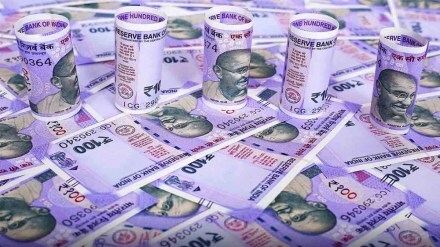The government will likely target lower customs duty collections in the Budget for the next fiscal from the FY23 level, as foreign trade growth is expected to decelerate further, official sources told FE. It could be for the first time since FY20 when the customs revenue is expected to moderate from the previous year.
The government had budgetted gross customs duty mop-up of Rs 2.13 trillion for this fiscal, compared with the FY22 revised estimate (RE) of Rs 1.89 trillion. It represents 7.7% of the budgetted gross tax revenue for FY23, against 7.5% (RE) in the last fiscal.
“The World Trade Organization (WTO) has already slashed its global trade volume growth forecast to just 1% for 2023 (against the projected 3.5% growth for this year). This will impact India as well. Growth in domestic imports has come down substantially in the past two months. So, customs duty collection will most likely be budgetted at a lower level – below Rs 2 trillion – for FY24,” said an official.
Also Read: Govt likely to meet non-tax revenue target for FY23
Merchandise import growth steadily eased in recent months, from as high as 57.5% on year in May to 5.4% in November. This is driven by at least three factors. First, the pent-up domestic demand for goods, witnessed after the second Covid wave, is moderating. Second, exports of some of the products, where the country relies heavily on imported inputs, are slowing. Third, global commodity prices are easing, weighing on the import value.
Given that advanced markets, especially Europe, could continue to witness demand slowdown in 2023, Indian exports (including from import-sensitive segments) will likely remain under pressure. At the same time, international commodity prices are expected to moderate further in the wake of the interest rate tightening by key central banks. So, Indian imports, especially in value term, could either shrink next fiscal or see muted growth.
Against such a backdrop, the customs duty collection, too, could remain under pressure in FY24 unless the government resorts to tariff hikes on a grand scale. Of course, any increase in such a mop-up also hinges on the composition of imports (products that attract high duties) rather than just the rise in overall imports.
Also Read: RBI may effect one more rate hike; repo rate may rise to 6.5 pc: Uday Kotak
The WTO in October warned of a “darkened 2023”, as it sharply cut its growth forecast of global trade volume, and warned of a likely contraction if the conflict in Ukraine escalates. It pegged the global trade volume growth for 2023 at just 1%, way below its earlier forecast of 3.4%. The risks to the forecasts, it cautioned, were tilted to the downside.
India’s average applied import tariff rose to 18.3% in 2021 from 15% in the previous year. Given that the government has raised imports duties on a range of products, including gold, umbrellas, headphones and earphones and smart meters, this year, the applied tariff is expected to remain elevated in 2022 as well on a net basis, factoring in duty cuts on a number of other products. However, that may not be sufficient to prop up the customs revenue if imports of products, which attract high duties, falter.
